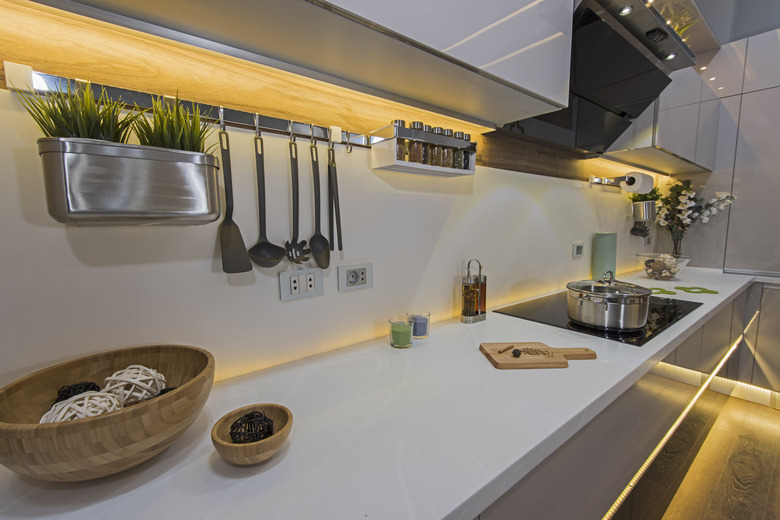How To Clean A Yellow Plastic Fluorescent Light Cover
No matter how clean you keep your home or office, old and yellowed plastic light covers can create a rundown and dated appearance. This yellowing occurs because older plastics contain a fire retardant called bromine. Over time, bromine molecules destabilize and free themselves from the plastic, ultimately rising to the top and causing a yellow discoloration. There are several ways to remove yellow from plastic and restore its appearance, but you must do so carefully to prevent streaking or weakening the plastic.
How to Get Started
How to Get Started
When removing yellow discoloration from plastic, you first need to clean it. Remove the cover from your light fixture and shake out any dead insects or other loose debris. You can then use denatured alcohol or warm soapy water to wipe the plastic down and remove any dust or dirt.
If the yellow plastic you wish to restore is on an old computer keyboard or other appliance, you'll need to remove the plastic cover before cleaning and restoring it. You want the solutions you use to work on the surface of the plastic without finding their way into appliances. Exercise caution when cleaning around labels and logos, as alcohol and other cleansers may remove them.
For tough stains and dirt, try using a magic eraser rather than harsh chemicals. Protect yourself, as well as the plastic. Always wear gloves and eye protection when working with any chemicals and use sandpapers in well-ventilated areas.
Easiest Plastic Cover Cleaning Method
Easiest Plastic Cover Cleaning Method
For the best results with the least amount of elbow grease, use a hydrogen peroxide solution to restore yellow light covers. If desired, you can make your own by combining 1 pint of hydrogen peroxide (at 10 to 15 percent strength), 2 rounded tablespoons of xantham gum (available at health food stores), 1 teaspoon of glycerin (available at pharmacies) and 1/4 teaspoon of an oxygenated laundry booster.
If you prefer not to play chemist, you can also pick up a creamy hydrogen peroxide hair developer at any beauty supply store. Simply ask for 40 volume creme developer.
After giving your plastic a good cleaning, use a brush to apply a thick layer of hydrogen peroxide solution. Completely coat the piece before wrapping it in plastic wrap to keep your solution from evaporating. Push out any air bubbles and set the wrapped plastic in direct sunlight. Rotate the piece every 90 minutes.
Leave the light cover or other plastic pieces in the sun all day, applying a fresh coat of hydrogen peroxide cream every two or three hours to keep it from drying out and causing a streaky finish. When the sun starts to go down, bring your plastic back inside, unwrap it and rinse it thoroughly. If you still see yellowed spots, repeat the process.
A Bleach Soak
A Bleach Soak
If hydrogen peroxide fails to remove the yellow from your light cover, you can up the ante and try a soak in bleach. Bleach should prove effective, but may weaken old plastic and make it more brittle, so use it with caution. To try bleach, fill your bathtub with equal parts bleach and water. Soak the plastic cover in the bleach for several hours until it turns white again.
When your tub is too small or you're at the office without one, put your bleach solution in a spray bottle. Dampen paper towels with the solution and wrap the light cover in the bleach-soaked towels. Place the plastic in the sunlight and periodically rewet the paper towels as needed to keep them damp throughout the day. When you're done bleaching, rinse the light covers thoroughly and reinstall them.
Sanding It Out
Sanding It Out
Although it requires a bit more effort, you can also try sanding yellowed plastic. The goal of sanding is to remove just a bit of the plastic's top layer to reveal the unyellowed surface underneath. You'll still need to clean the plastic first, then sand it with extra fine sandpaper. Extra fine sandpaper is any with a grit of 600 or higher.
When you're done sanding, rinse away the sanding dust and reinstall the plastic cover.
